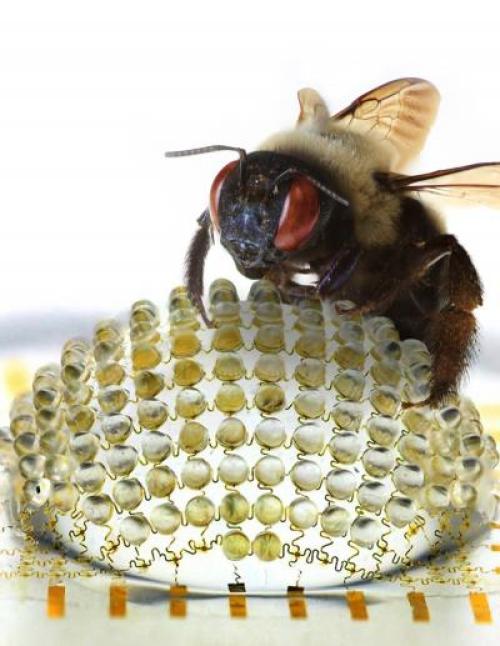We're open daily this holiday! View holiday hours
Science News
Bio-Inspired Robots
May 8, 2013
by Molly Michelson

At Science Today, we love stories that highlight bioinspiration—tales that reveal how close inspection of the natural world lead to problem-solving in the human realm. Engineering-wise, nature has had millions of years of trial and error to get things right, so why not learn from evolution and adaptation?
This week, the Academy will open Built for Speed, a new exhibit that explains the adaptations by fast fish and marine mammals that make them swift and speedy underwater and how boat designers use a similar process of adaptations to create ultrafast sailboats to compete in the America’s Cup race.
To get ready for Built for Speed, we’re featuring a few recent news stories about robots inspired and refined by the study of nature. Enjoy!
UC Berkeley
One of the leaders in bio-inspired robots is right across the Bay from the Academy. Biologists and engineers at UC Berkeley have been collaborating for several years on biological inspiration. And the researchers find inspiration from the most unlikely of sources. We’ve covered their gecko-inspired bot, but earlier this year news outlets featured Cal cockroach robots. Did you know that cockroaches are able to balance without using their brains? According to Discovery News, this is fabulous news for robot builders:
… One of the recurring challenges of designing a mobile robot is writing an algorithm that keeps it from falling over.
VELOCIRoACH, is a Berkeley roach bot and happens to be one of the fastest robots in the world. TAYLRoach uses its tail to make fast turns. New Scientist says that smaller is better for these robots:
Small-legged robots are being developed for search and rescue, for situations where a location is inaccessible or too dangerous for humans.
More Insect-bots
Berkeley isn’t the only academic biorobotic institution. Last week, Harvard scientists published their engineering breakthrough—the first flying insect-like robot. Ten to fifteen years in the making, this bug-bot was inspired by the biology of a fly. It has submillimeter-scale anatomy and two wafer-thin wings that flap almost invisibly, 120 times per second! Check out the video.
Do you feel like you’re being watched? Another publication last week describes a new camera, inspired by insect eyes. Made of 180 tiny lenses, the camera can take panoramic pictures that offer similar compound views to those of ants, bees and praying mantises. According to Ed Yong in National Geographic, this tiny biomimetic camera is “ideal for surveillance. Perhaps in the future, we’ll be watched by man-made flies on the walls.” Creepy!
Speaking of creepy, how about small robots that work together like a colony of ants? French and American scientists wanted to understand how individual ants, when part of a moving colony, orient themselves in the labyrinthine pathways that stretch from their nest to various food sources. They hope their robotic findings reveal “possible improvements for the design of man-made transportation networks,” according to an abstract in PLoS Computational Biology.
Snakes and Seahorses and Birds, Oh My
Want more? How about a soft snake robot that slithers? A robotic arm as flexible and protected as a seahorse’s tail? Airplane wings fashioned after the wings of a herring gull? What about a swimming and crawling robot as efficient as a salamander? All of the above? Help yourself—many of the links above have videos detailing the creations.
Speedy Virtual Robots
Finally, just because it’s super cool, check out this video on Discover’s site. Researchers at the University of Wyoming and Cornell created a computer program to design fast virtual robots. Each robot could be made out of four different materials, and only the fastest would “reproduce.”
Essentially, the researchers incentivized forward motion, so the faster the robot, the more successful it would be in the evolutionary race.
You have to see the simulations created in this “Evolution in Action.”
Image of insect-eye camera: John A. Rogers, University of Illinois at Urbana-Champaign